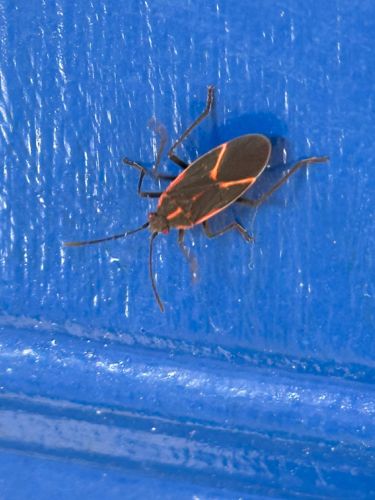Boxelder Bug
Scientific Name: Boisea trivittata
Order & Family: Hemiptera (True Bugs), Rhopalidae (Scentless Plant Bugs)
Size: Approximately 1/2 inch (12-14 mm) in length.

Natural Habitat
Typically found on boxelder trees (Acer negundo), and occasionally on other maples, ash, and fruit trees. They often move to sunny, south-facing walls of buildings in the fall to seek shelter for overwintering.
Diet & Feeding
Primarily feeds on the seeds of boxelder trees. They use their piercing-sucking mouthparts to extract fluids from leaves, flowers, and developing seeds. Sometimes they feed on ash and maple tree seeds as well.
Behavior Patterns
Boxelder bugs are known for congregating in large numbers, especially in the fall when they seek warm places to overwinter. They are attracted to buildings and will often enter homes through cracks and crevices. They are generally slow-moving, especially when cold. They become active on warm days, even in winter.
Risks & Benefits
Boxelder bugs are generally considered a nuisance pest rather than a harmful one. They do not bite, sting, or transmit diseases to humans or pets. They can stain curtains, furniture, and walls with their fecal droppings, and may emit an unpleasant odor if crushed. They cause minor damage to trees, usually not severe enough to warrant control. There are no significant benefits to humans, though they are part of the ecosystem as a food source for some predators.
Identified on: 10/21/2025